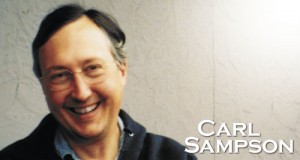 A great deal of confusion has been generated over the past year about the term “fake news.” As a purveyor of a column that could be labeled as such,
A great deal of confusion has been generated over the past year about the term “fake news.” As a purveyor of a column that could be labeled as such,
I will try to clear up any confusion that politicians and others might have.
First, let’s talk about “news.” That’s when a reporter tries his or her best to tell readers, or listeners, what’s going on. It’s really that simple. A reporter will hear about something that might be newsworthy — interesting — and write a news story.
As an example, let’s use a house fire.
Good reporters will follow these steps: go to the scene and report what they see and hear; then check with a primary source such as the fire district. By interviewing the chief or a spokesman, a reporter will be able to get the nuts and bolts of the story — who, what, when, where and possibly how. Often the cause of a fire will remain under investigation, so the reporter will need to check back to see if a cause can be identified.
Then the reporter might talk to the property owner and neighbors to find out more context — if a family lived there or if the house was vacant are important facts to determine.
The reporter will write the first draft of the story and submit it to an editor. He or she will then read it and correct it for grammar, style and double-check facts. Most importantly, the editor will look
for “holes” in the story — key facts that are missing.
Once the editor and reporter are satisfied that the story answers as many questions as possible, it will be published. That’s news — stories that are thoroughly reported and edited to tell readers as much as possible about the facts and context of a story.
What’s not news is what you see on cable news channels, which I would describe as a goat rope. That’s when two or three — or more — people sit around jawing about stuff, whether they have any direct knowledge about it or not. This is a way to fill time when a network or station is too cheap or lazy to get actual reporters to write actual stories about the events of the day. It is a close relative of talk radio.
These networks will also interview newsmakers representing one side of a story. Still another development is one reporter interviewing another reporter. What you mainly get is conjecture,
not news.
I would not call these “fake news” so much as I would call them “no news.”
Another area that some people confuse with news is opinion. These appear in the form of columns — like this one — in which a single person expresses his or her opinion. He may have some special insight into an issue — I have been a journalist for more than 40 years — that can help readers understand the context of an issue. Letters to the editor are cousins of columns, except they come from readers.
Editorials also appear on the opinion page of newspapers and are labeled as such. They are written by members of a newspaper’s editorial board, often the publisher and editor of the paper, and are the product of a discussion of a topic, news stories that have been in the paper and interviews with newsmakers involved in an issue. Editorials express the opinion of the editorial board and are meant to cultivate thought and discussion of a particular topic and, hopefully, prod those in power to solve problems.
So “fake news,” “news” and “opinion” are three different things. As an American you can choose what to read, listen to and believe. You just need to know the difference between the three.
Carl Sampson is a freelance editor
and writer. He lives in Stayton.